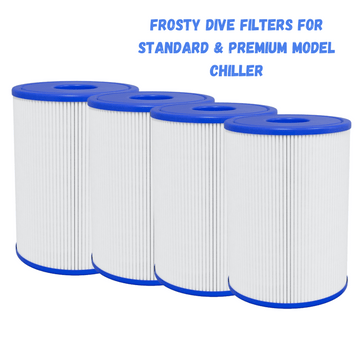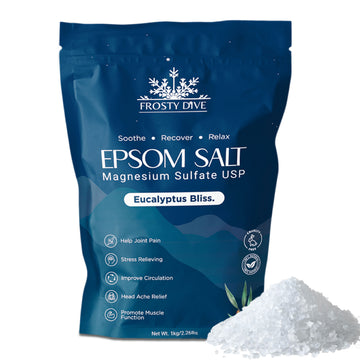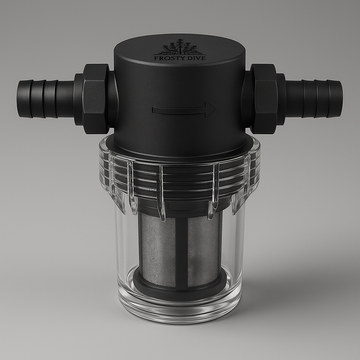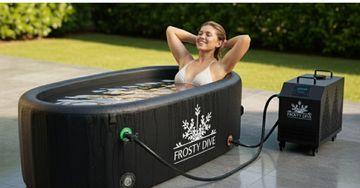Ice baths are a popular recovery tool used by athletes across all levels, from weekend warriors to professional sports stars. The process of immersing the body in cold water after intense physical activity has been shown to help reduce muscle soreness, inflammation, and even speed up recovery. But who should use ice baths, when is the best time to take one, and how do they compare to other recovery methods? In this article, we’ll break down everything athletes need to know about using ice baths for recovery.
Who Should Use Ice Baths?
Ice baths are typically used by individuals who push their bodies to physical extremes, whether through rigorous exercise, sports, or physically demanding jobs.
1. Athletes
Professional athletes often use ice baths as a key part of their recovery routine. For those who participate in sports that require intense physical effort, such as running, cycling, weightlifting, or football, ice baths help reduce muscle soreness and inflammation. After a grueling workout or competition, the ice bath can minimize the amount of damage the muscles incur, allowing athletes to recover faster and perform better in the next session or match.
2. Fitness Enthusiasts
Even non-professional athletes, such as gym-goers or individuals following regular fitness routines, can benefit from ice baths. If you engage in activities like intense cardio, HIIT (high-intensity interval training), or strength training, ice baths can help reduce delayed onset muscle soreness (DOMS), allowing you to continue training without prolonged discomfort.
3. Physically Demanding Professions
Not just athletes benefit from ice baths—workers in physically demanding jobs (such as construction, firefighting, or manual labor) can also use cold water therapy to recover from the strains and stresses placed on their bodies. Those who stand for long hours or perform repetitive motions can find relief in cold water immersion, helping reduce pain and fatigue in muscles and joints.
When to Take an Ice Bath: Post-Workout vs. Injury Recovery
Knowing when to take an ice bath is crucial for getting the most benefit. Here are two common scenarios:
1. Post-Workout Recovery
Ice baths are most commonly used immediately after intense physical activity. After a workout, especially one involving heavy lifting or high-intensity cardio, muscles are stressed and micro-tears can form in the muscle fibers. This damage causes inflammation and pain, which leads to muscle soreness (DOMS) that can last for several days. An ice bath helps reduce inflammation, constricts blood vessels, and limits the amount of damage caused by the workout.
The cooling effect is temporary but beneficial because, once out of the cold water, blood vessels dilate, bringing fresh, oxygenated blood into the muscles. This process helps clear out waste products like lactic acid, promoting faster healing and less soreness. For athletes, taking an ice bath within 30 minutes to an hour after exercise can be an effective way to speed up recovery.
2. Injury Recovery
Ice baths are also commonly used for injury recovery. When an injury, like a sprain, strain, or bruise, occurs, inflammation is part of the body’s healing process. However, excessive inflammation can impede the recovery process. An ice bath helps to reduce this swelling and numb the affected area, providing relief from pain.
Unlike post-workout recovery, ice baths used for injury recovery are often more localized and focused on specific areas of the body, such as an injured ankle or knee. Applying cold therapy helps slow blood flow to the area, reducing the amount of swelling that occurs in the initial stages of injury. However, it's important to consult with a healthcare professional to determine the best recovery strategy, as in some cases, ice baths may not be the best option depending on the type or severity of the injury.
Alternative Recovery Methods vs. Ice Baths
While ice baths are a popular choice, they are not the only recovery technique available. Many athletes use a combination of recovery methods to address different aspects of muscle repair and overall well-being. Let's compare ice baths to some of the most commonly used alternatives:
1. Compression Therapy
Compression therapy involves using garments (like sleeves, boots, or socks) that apply controlled pressure to the muscles. The idea is that compression helps to increase circulation, reduce swelling, and minimize muscle soreness after exercise.
Pros of Compression Therapy:
- It’s non-invasive and can be done at home.
- It helps promote blood flow and reduces muscle stiffness.
- Compression therapy is often used for long-term recovery and prevention of injuries.
Cons:
- While effective, compression therapy may not provide the same immediate reduction in muscle inflammation as an ice bath.
- The recovery process may take longer compared to cold water immersion.
2. Stretching
Stretching is another key component of recovery. It helps to lengthen muscles, improve flexibility, and reduce muscle tightness after a workout. Stretching is especially helpful when used as part of a cooldown routine.
Pros of Stretching:
- It improves flexibility and prevents stiffness in muscles.
- Stretching can be done before and after workouts, enhancing overall mobility.
Cons:
- Stretching alone doesn’t reduce inflammation or provide immediate relief from soreness.
- It might not be as effective for deep muscle recovery when compared to ice baths, especially after high-intensity or long-duration exercise.
3. Massage Therapy
Massage therapy is a hands-on technique that helps reduce muscle tension, improve circulation, and promote relaxation. Sports massages, in particular, target specific muscles that have been overused during physical activity.
Pros of Massage:
- It provides immediate relaxation and relief from tight muscles.
- Massages can also help with mental relaxation and stress reduction, which is vital for overall well-being.
Cons:
- While effective for muscle relaxation, massage doesn’t provide the same reduction in inflammation that cold therapy does.
- It can be costly and time-consuming compared to a quick ice bath.
4. Foam Rolling
Foam rolling, or self-myofascial release (SMR), is a technique that involves rolling a foam cylinder over muscles to break up knots and increase blood flow. It’s often used as part of warm-up and recovery routines.
Pros of Foam Rolling:
- It's a cost-effective and simple way to reduce muscle tightness and improve flexibility.
- It’s a great option for targeting specific muscle groups and trigger points.
Cons:
- Like stretching, foam rolling doesn’t have the same anti-inflammatory effects as ice baths.
- It can be painful, especially for areas of the body that are particularly tight or sore.
- Why Ice Baths Might Be More Beneficial for Certain Injuries or Workouts
Ice baths offer unique benefits for specific scenarios where inflammation reduction is a
priority. For example:
Post-High-Intensity Workouts: After long-distance running, intense cardio, or weightlifting, ice baths are more effective at reducing muscle inflammation and soreness than other techniques. The cold helps reduce the immediate inflammatory response and aids in faster recovery.
Trauma Recovery: For injuries like sprains, strains, or bruises, ice baths are often more effective than other methods because they directly target the inflamed area and limit swelling. This can help reduce pain and speed up the healing process.
Chronic Overuse Injuries: Athletes suffering from overuse injuries (e.g., tendinitis or shin splints) can benefit from the anti-inflammatory effects of ice baths. Cold immersion helps reduce the persistent swelling and discomfort that these types of injuries cause.
Conclusion
Ice baths are a powerful recovery tool, especially for athletes and individuals who engage in intense physical activities. Whether you’re recovering from a tough workout, dealing with an injury, or just looking for ways to minimize muscle soreness, ice baths can be a highly effective option. While other recovery techniques, such as compression therapy, stretching, and massage, each offer their own benefits, ice baths stand out in their ability to quickly reduce inflammation and accelerate the healing process. Understanding when and how to use ice baths—and combining them with other recovery strategies—can help you achieve the best results.
























